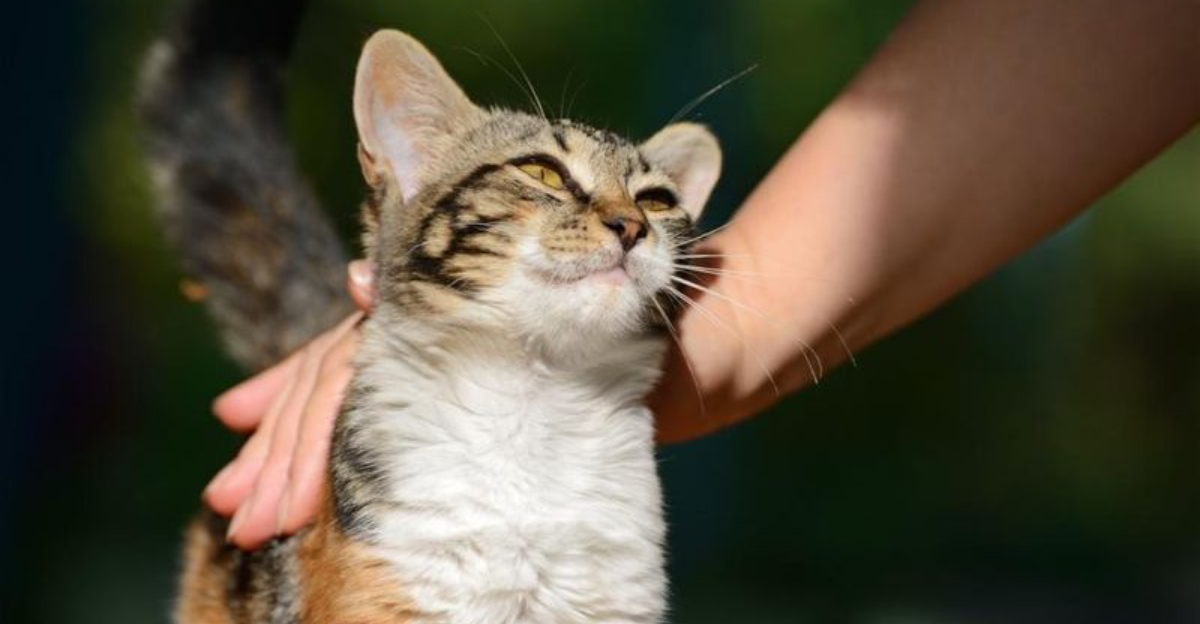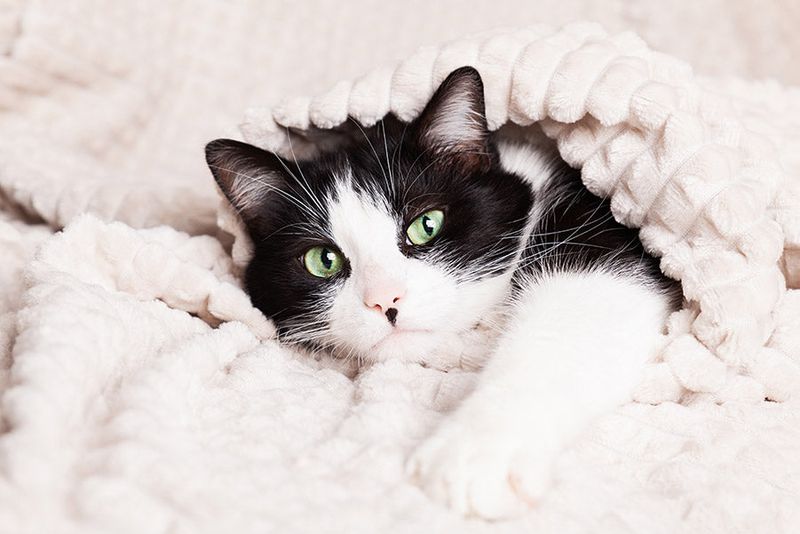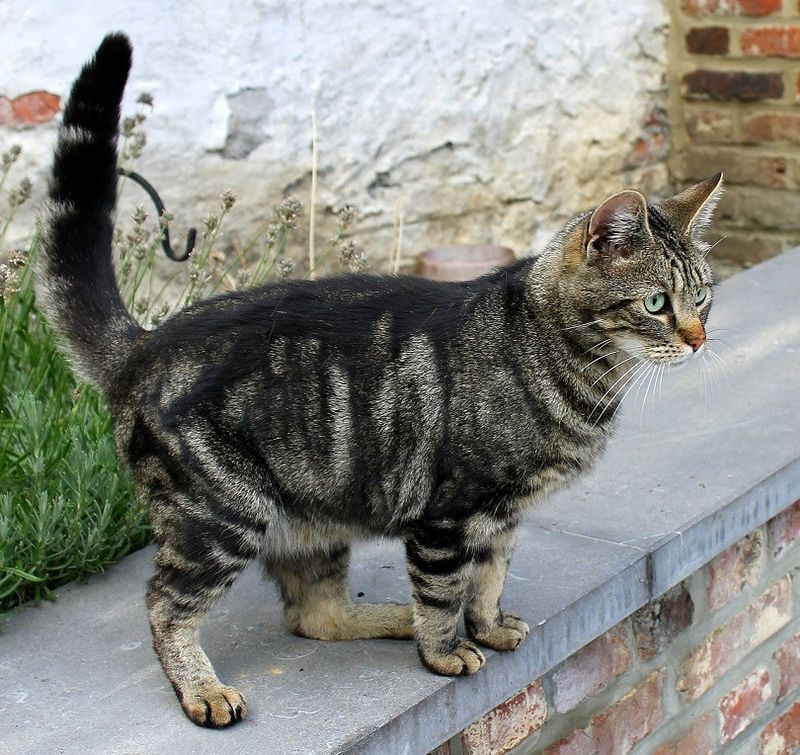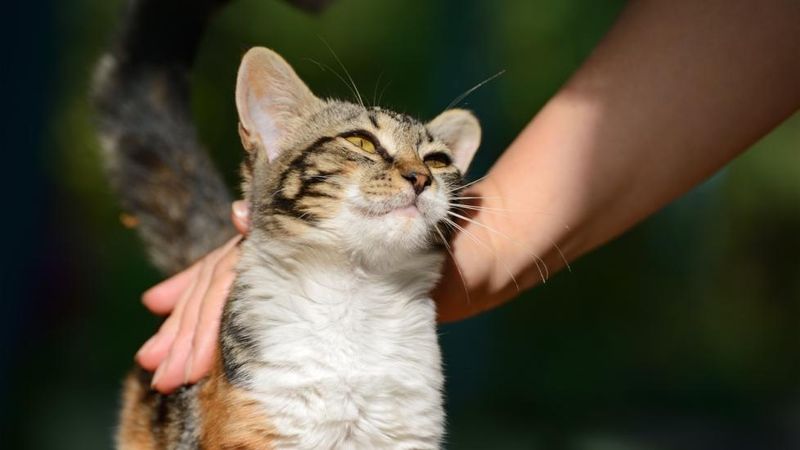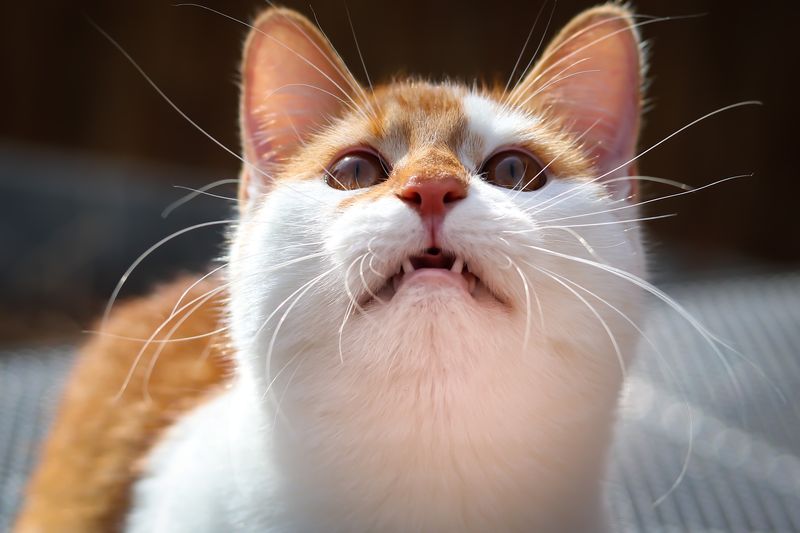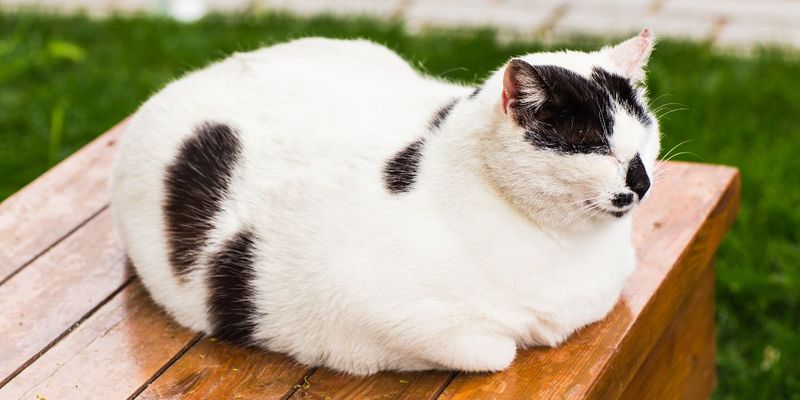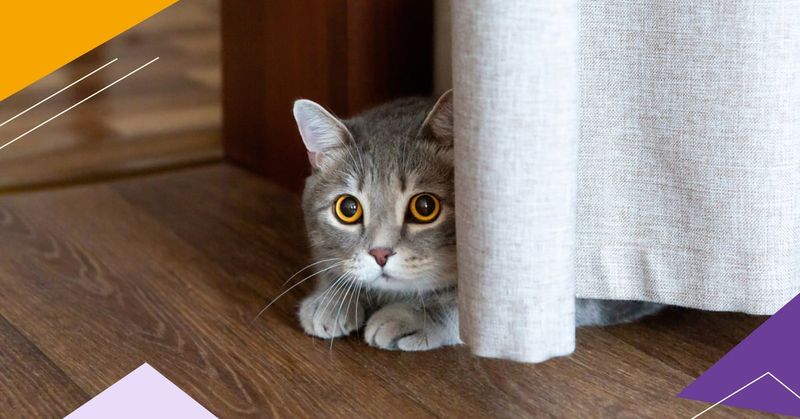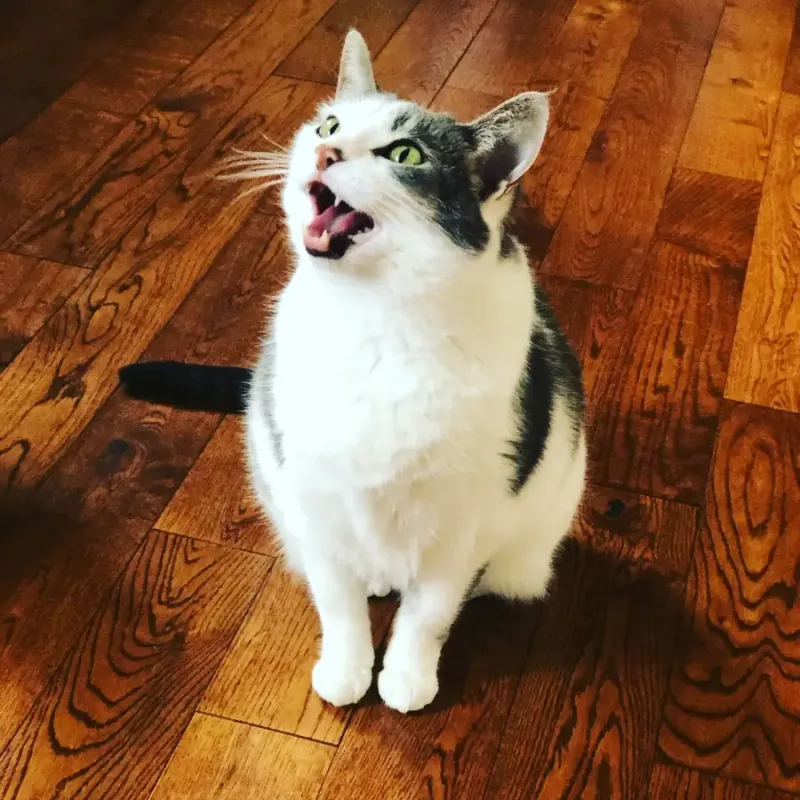📖 Table of Content:
Cats may seem mysterious, but they actually communicate with us all the time. Understanding your feline friend’s body language and behaviors helps build a stronger bond between you. Whether your kitty is purring with joy or showing subtle signs of distress, learning to read these cues makes you a better pet parent and ensures your cat lives their happiest life.
1. The Slow Blink
Cat experts call this gesture a “kitty kiss” for good reason. When your cat looks at you and slowly closes their eyes, they’re showing complete trust and contentment in your presence. This vulnerable moment means they feel safe enough to temporarily shut down their primary defense system—their vision.
Try returning this gesture by making eye contact and slowly blinking back. Many cats respond positively to this communication. The slow blink is one of the clearest ways cats show they’re comfortable and happy with you. Most cats perform this charming behavior when they’re relaxed on their favorite perch or cuddled next to you on the couch.
2. Kneading Paws
The rhythmic pushing motion your cat makes with their front paws against soft surfaces takes you straight back to their earliest days. Kittens knead their mother’s belly to stimulate milk flow, and adult cats carry this behavior into adulthood as a sign of comfort and security.
Your lap becoming their kneading spot is actually a huge compliment! They associate you with the same feelings of safety and contentment they felt with their mother. Some cats even drool slightly while kneading, further proving how deeply relaxed and happy they feel in that moment. The intensity of their kneading often correlates with their level of happiness.
3. Upright Tail With a Slight Curve
When your cat approaches you with their tail standing tall and slightly curved at the tip (like a question mark), they’re essentially waving their happiness flag. This distinctive tail position is reserved for greeting those they consider friends and family.
Wild cats and feral felines rarely display this posture, making it a special adaptation for domestic cats who’ve evolved to communicate with humans. The height and curve of the tail directly correlate to their excitement level. Pay attention to this greeting—it deserves acknowledgment! A simple head scratch or verbal greeting reinforces this positive interaction and strengthens your bond with your feline friend.
4. Belly Exposure
A cat rolling over and showing their belly represents the ultimate display of trust. The stomach is their most vulnerable body part, housing vital organs with minimal protection. By exposing this area, your cat is essentially saying, “I feel completely safe with you.”
Contrary to popular belief, this isn’t always an invitation for belly rubs. Many cats feel uncomfortable with direct stomach touches despite showing this trusting behavior. Some cats genuinely enjoy belly scratches, while others prefer head or chin rubs instead. The context matters too—a relaxed cat in a familiar environment showing their belly signals contentment, while the same behavior during play might be a defensive position before playful “attacks.”
5. Purring Symphony
The gentle rumble of a purring cat ranks among the most soothing sounds in the world. This distinctive vibration starts in your cat’s brain, where signals trigger vocal cord vibrations during both inhaling and exhaling—a remarkable biological feat! While purring commonly indicates happiness, cats also purr when injured or stressed as a self-soothing mechanism.
Context matters here—a purring cat with relaxed body language in a comfortable setting is almost certainly expressing pure contentment. The frequency of cat purrs (between 25-150 Hz) may actually promote healing and bone growth. Your cat’s personal soundtrack not only signals their happiness but might also benefit their physical health!
6. Chirps and Trills
Those adorable chirping or trilling sounds your cat makes when greeting you are actually special vocalizations reserved for friends. Mother cats use these sounds to communicate with their kittens, so when your adult cat directs them at you, they’re treating you as family.
Unlike meows (which cats developed primarily to communicate with humans), trills and chirps come from their natural communication repertoire. These sounds often indicate excitement and affection, especially when your cat follows you around the house, making these cheerful noises. The pitch and frequency of these vocalizations vary widely between cats. Some are quite chatty with elaborate, trilling conversations, while others save these special sounds for particular moments of joy.
7. Head Bunting
That gentle bump of your cat’s head against your hand, leg, or face is much more than a cute gesture. When your cat head-bunts you, they’re depositing facial pheromones from special glands located around their face, essentially marking you as part of their territory and trusted circle. This behavior, also called “bunting,” is a significant sign of affection in the feline world.
Cats only mark objects and beings they consider safe and valuable. The harder or more frequent the bunting, the stronger their affection typically is. Cats may also bunt against furniture, walls, and other household items to create a consistent scent profile throughout their territory, making their environment feel more secure and familiar.
8. The Relaxed Loaf Position
The classic “cat loaf” position—where your feline tucks all paws underneath their body while sitting upright—signals complete relaxation and contentment. This position allows cats to conserve body heat while staying alert, a perfect balance of comfort and readiness.
A truly happy loafing cat will have half-closed eyes and might slowly blink at you. Their ears will remain in a neutral, slightly forward position, and their tail will be neatly wrapped around their body or tucked underneath. The location of the loaf matters too. When your cat chooses to loaf near you rather than in a distant corner, they’re expressing both contentment and a desire for your company—a double win for cat parents!
1. Hiding Behavior
Sudden increases in hiding warrant attention. While cats naturally enjoy cozy nooks, excessive hiding often signals stress, illness, or pain. A normally social cat who suddenly spends hours under the bed may be trying to protect themselves when feeling vulnerable.
Environmental changes frequently trigger hiding—new pets, moving furniture, visitors, or even new scents can overwhelm sensitive cats. Physical discomfort is another common cause, as cats instinctively conceal weakness to avoid appearing vulnerable. Create accessible retreats throughout your home where your cat can feel secure. Respect their need for space, but monitor hiding duration. Any hiding lasting more than a day, especially when accompanied by changes in eating or litter box habits, requires veterinary attention.
2. Over-Grooming
Cats typically spend 30-50% of their waking hours grooming, but excessive grooming demands attention. Look for bald patches, irritated skin, or unusually thin fur, especially on easily-reached areas like the belly, inner legs, or base of the tail. These signs often indicate your cat is dealing with anxiety or discomfort.
Physical causes like allergies, parasites, or skin infections can trigger over-grooming. Psychological factors, including boredom, routine changes, or conflict with other pets also commonly lead to this behavior as a self-soothing mechanism. Environmental enrichment helps address stress-related grooming. Interactive toys, climbing opportunities, and consistent daily routines provide security. For persistent cases, consult your veterinarian, as medication or behavioral therapy might be necessary.
3. Changes in Vocalization
Sudden changes in your cat’s vocal patterns often communicate distress. A typically quiet cat who starts meowing excessively, or a vocal cat who becomes unusually silent, may be signaling discomfort or illness. The pitch and intensity of meows can indicate their urgency—higher, more persistent meows typically express greater distress.
Nighttime vocalization increases are particularly common in senior cats experiencing cognitive changes or sensory decline. Cats may also become more vocal when experiencing pain, hunger, thirst, or a desire to mate if unspayed/unneutered. Record unusual vocalizations to play for your veterinarian. Note when these sounds occur, what seems to trigger them, and any accompanying behavioral changes to help identify the underlying cause of your cat’s vocal distress signals.
4. Litter Box Avoidance
Changes in litter box habits rank among the most reliable indicators of feline distress. Cats naturally prefer cleanliness and consistency, so avoiding a previously accepted litter box signals something is wrong. Medical issues like urinary tract infections, kidney problems, or digestive disorders commonly manifest through inappropriate elimination.
Environmental factors also contribute significantly. Box location, litter type, cleanliness, or nearby disturbances can deter cats from using their designated bathroom. Multi-cat households may experience territorial disputes over litter box access. Never punish litter box avoidance—this behavior isn’t spite but communication. Schedule a veterinary exam to rule out medical causes first. Once health issues are addressed, experiment with different box styles, locations, and litter types to restore proper bathroom habits.
5. Appetite Changes
Your cat’s relationship with food provides valuable insights into their well-being. Sudden increases or decreases in appetite rarely happen without reason. Decreased interest in food often indicates illness, dental pain, stress, or depression. Conversely, unusual hunger may signal hyperthyroidism, diabetes, or certain medications’ side effects.
Observe not just how much they eat, but how they approach food. Sniffing but not eating, chewing on one side of the mouth, or approaching eagerly, then backing away, suggests potential problems. Food preferences can shift with age or health changes. Document eating patterns before veterinary visits. Note specific behaviors, timing, and any environmental changes that coincided with appetite shifts. This information helps veterinarians identify underlying causes and develop appropriate treatment plans for your feline companion.
